Wildlife - Harbour Seals
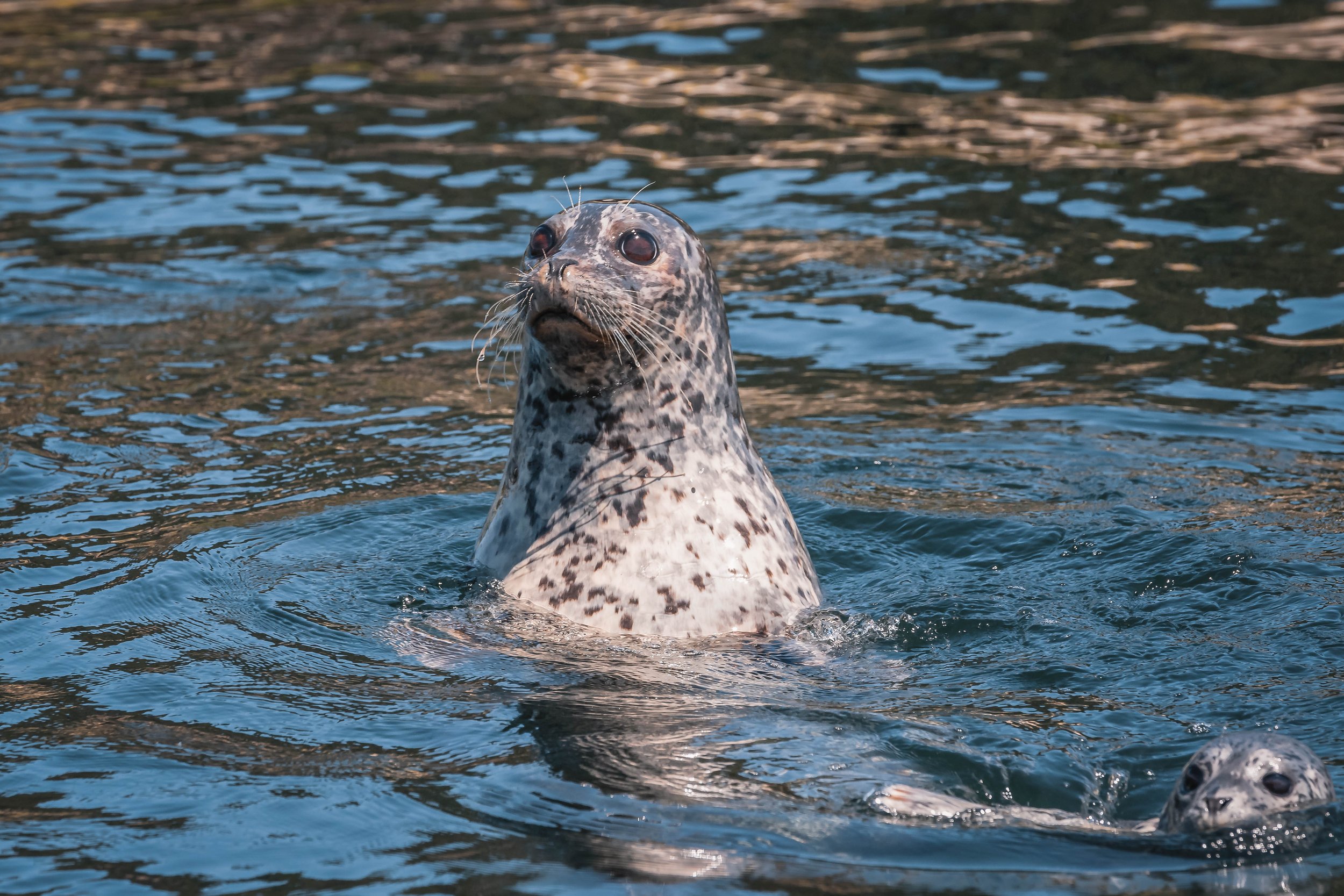

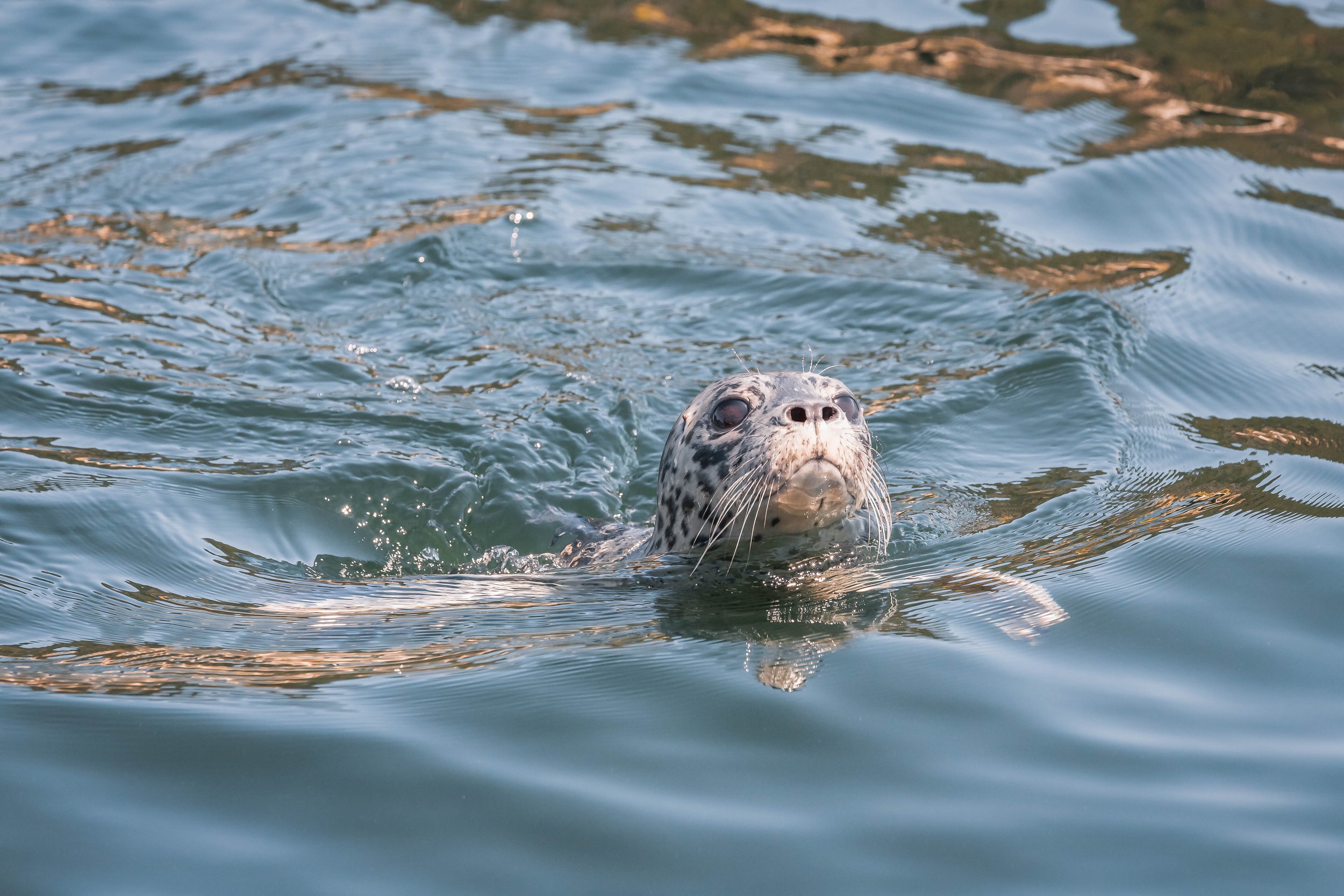
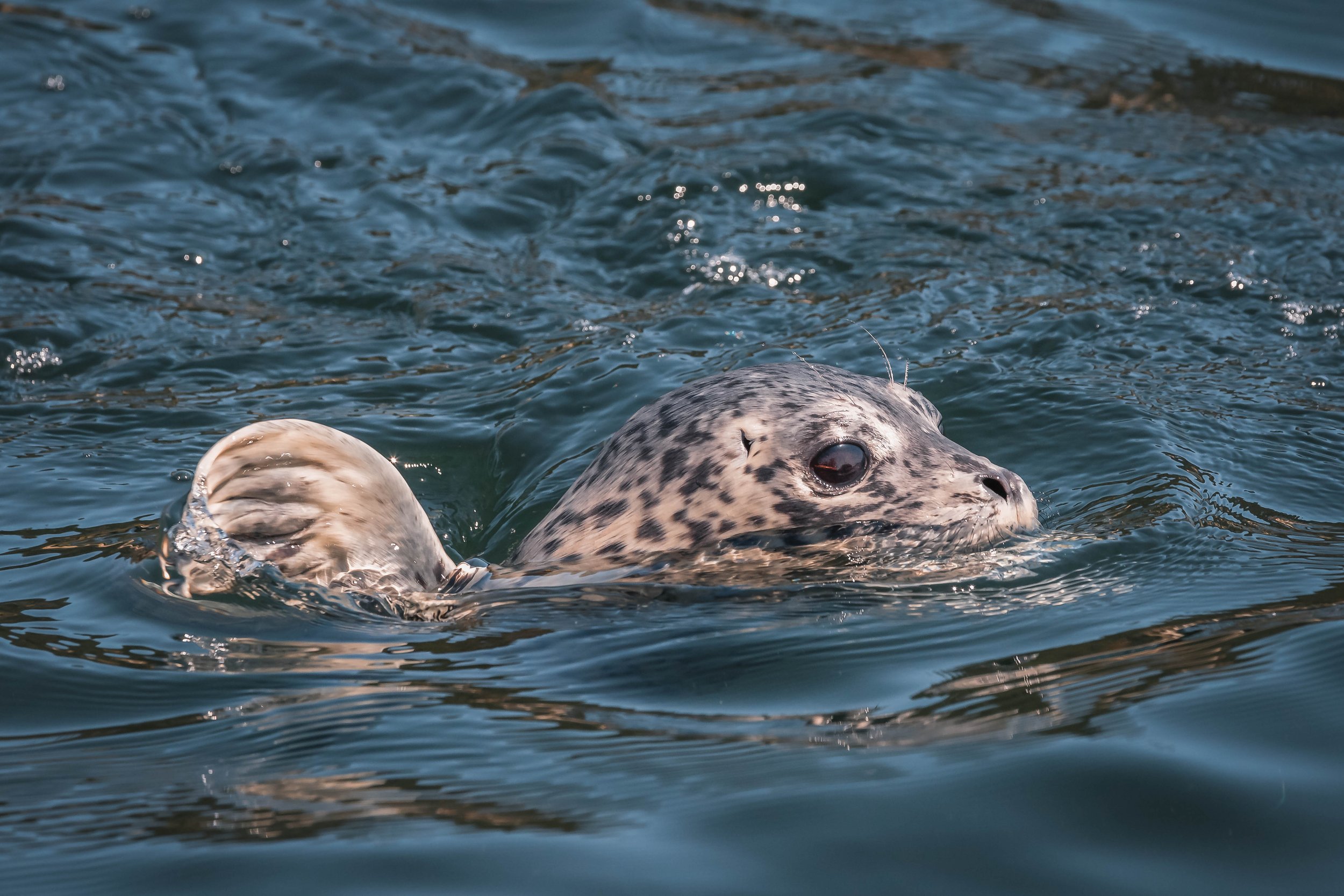
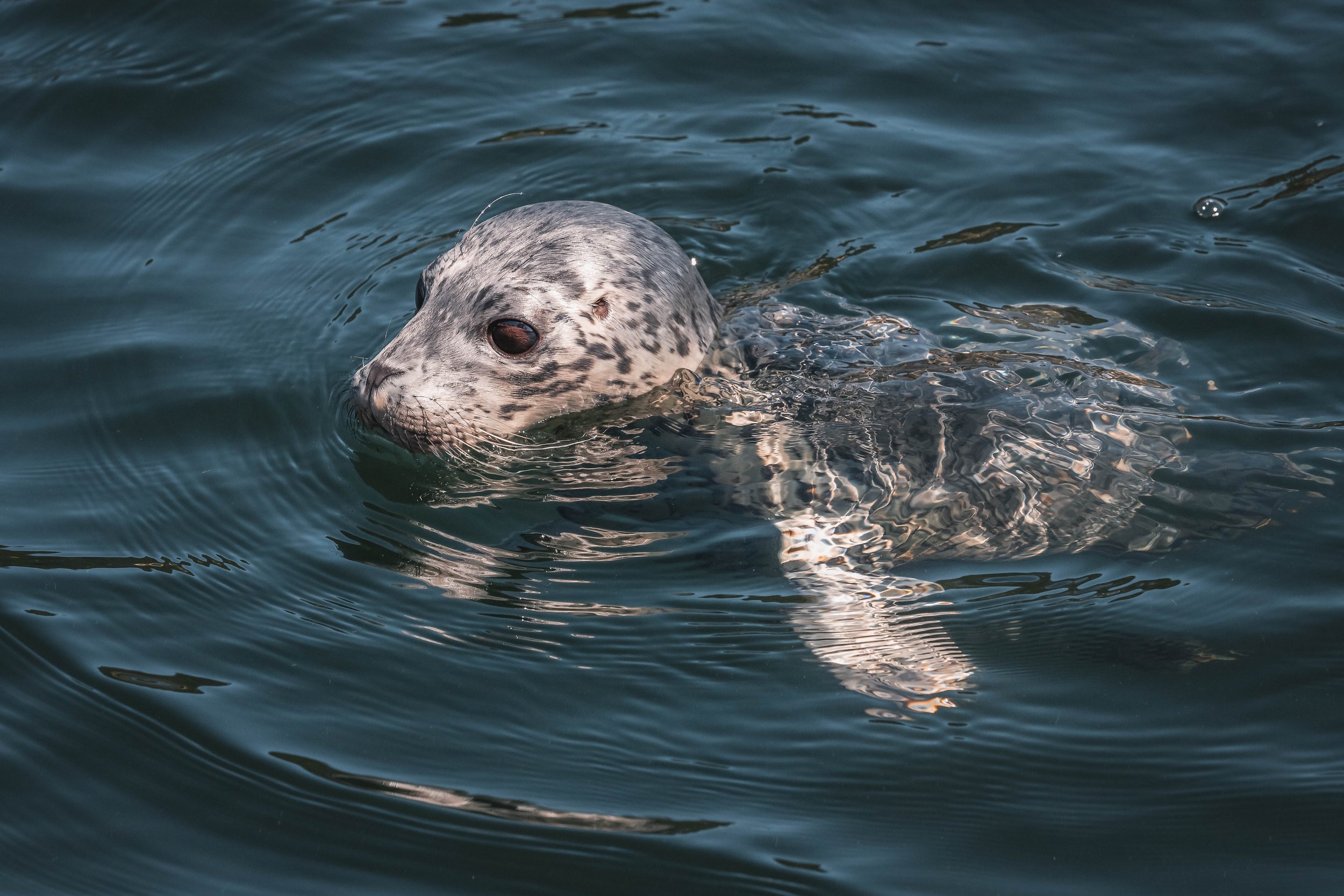
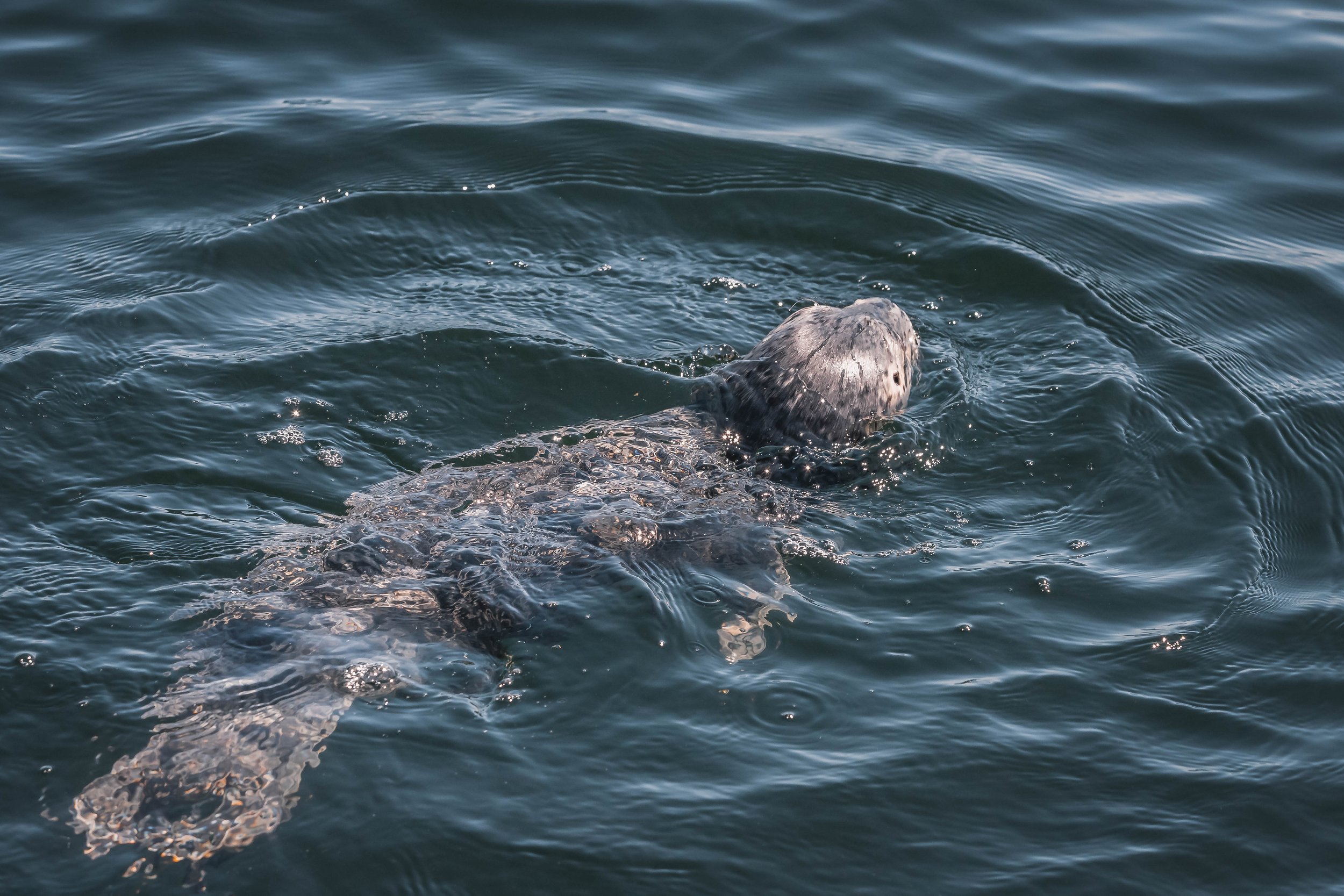
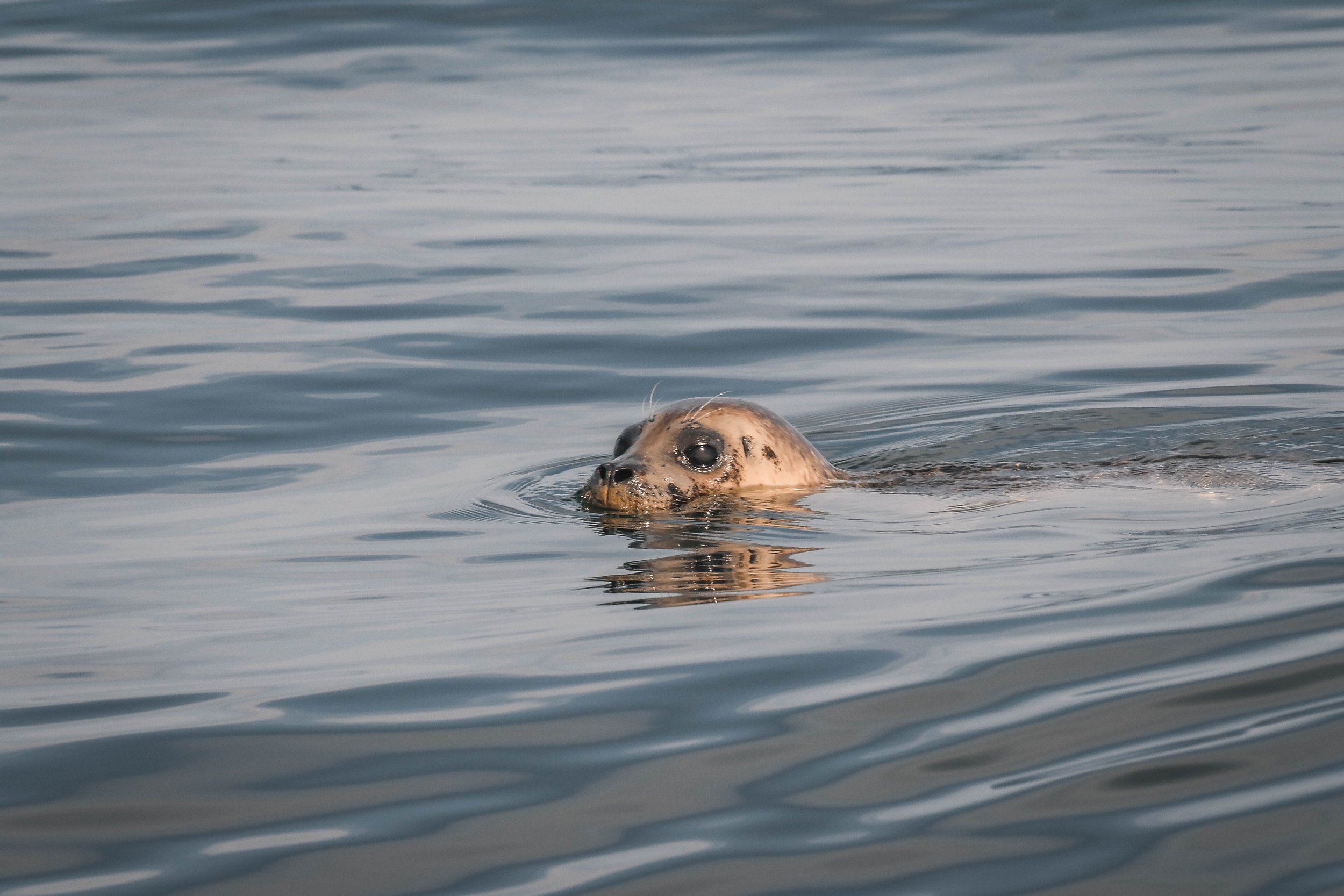
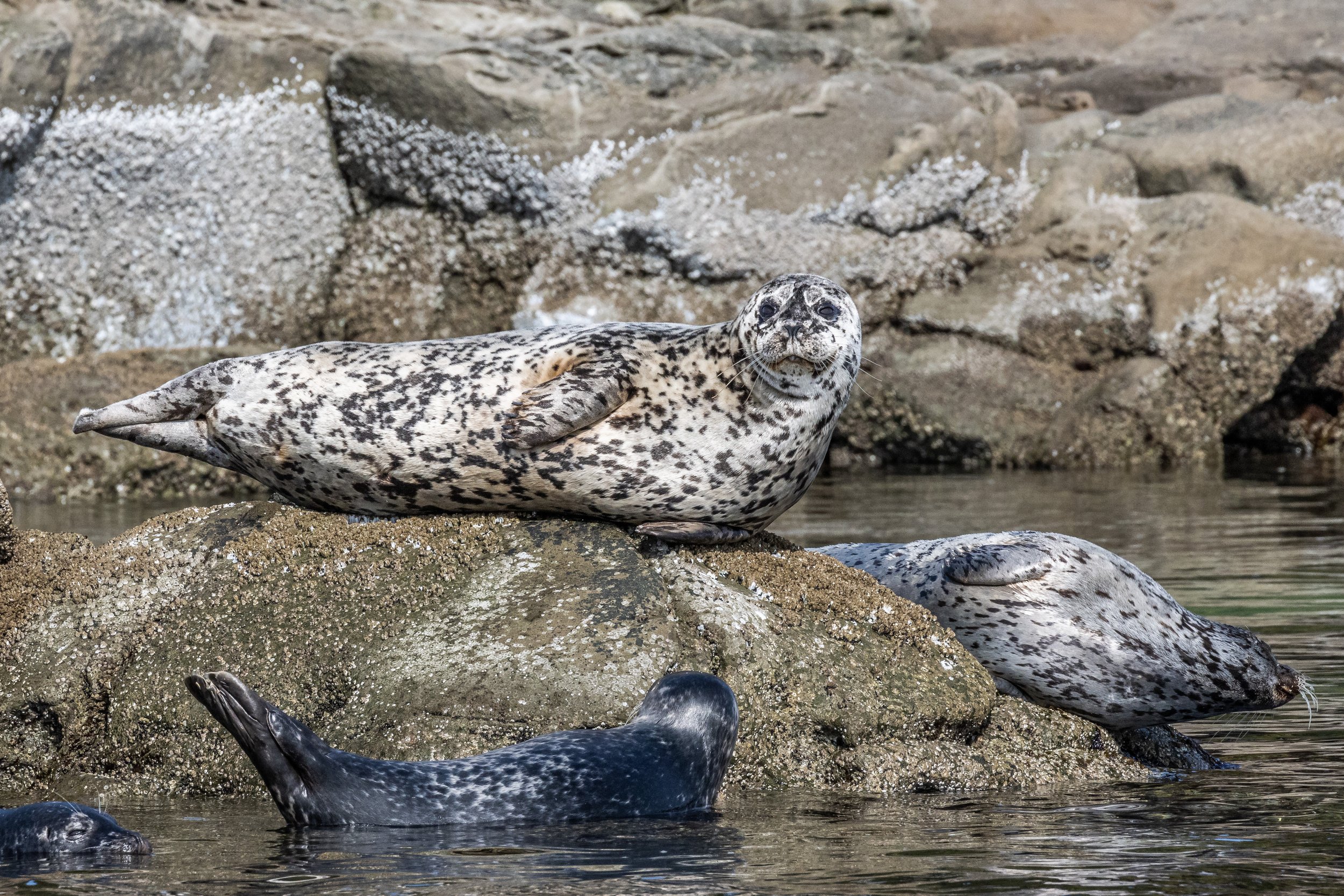
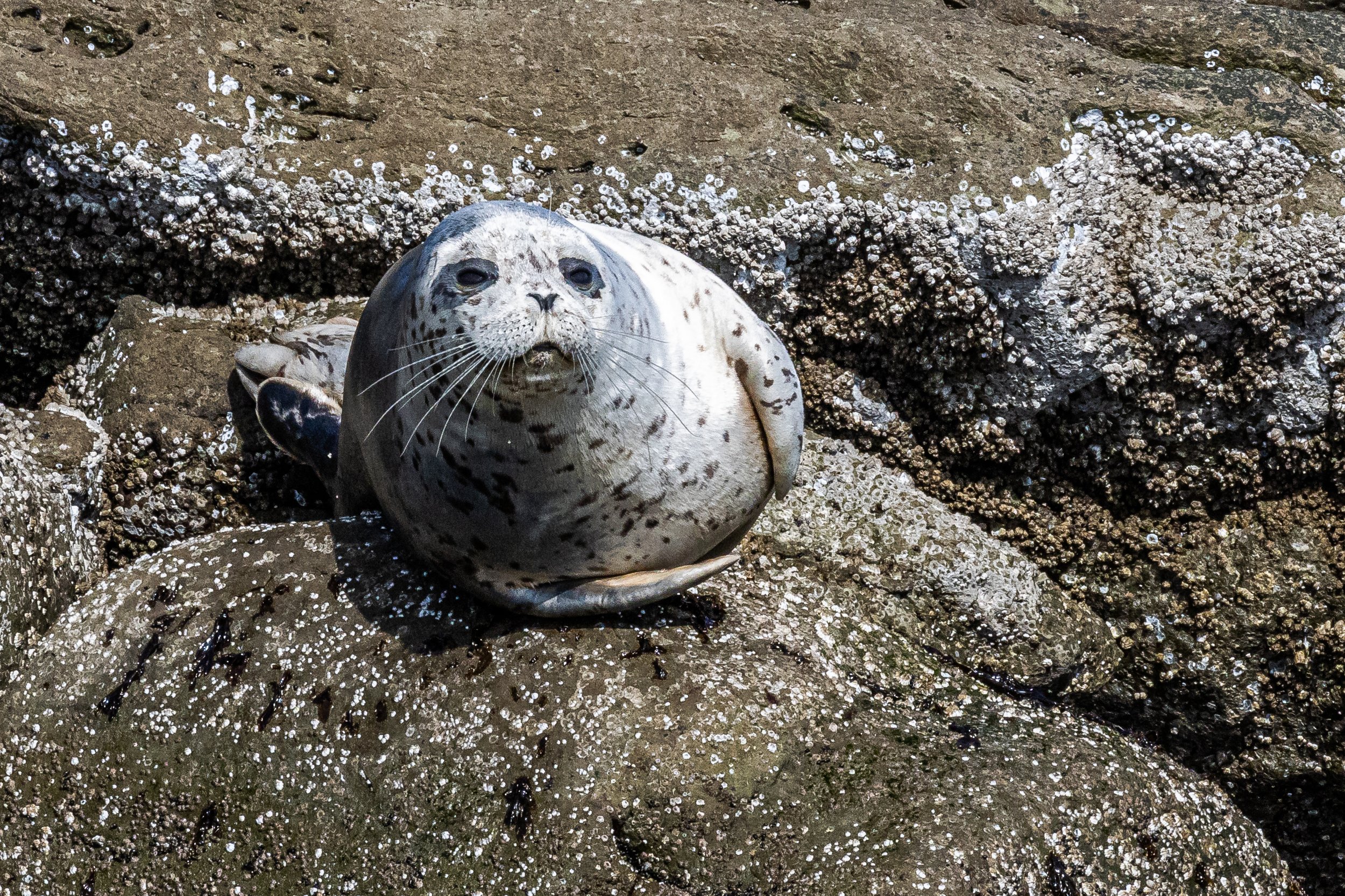
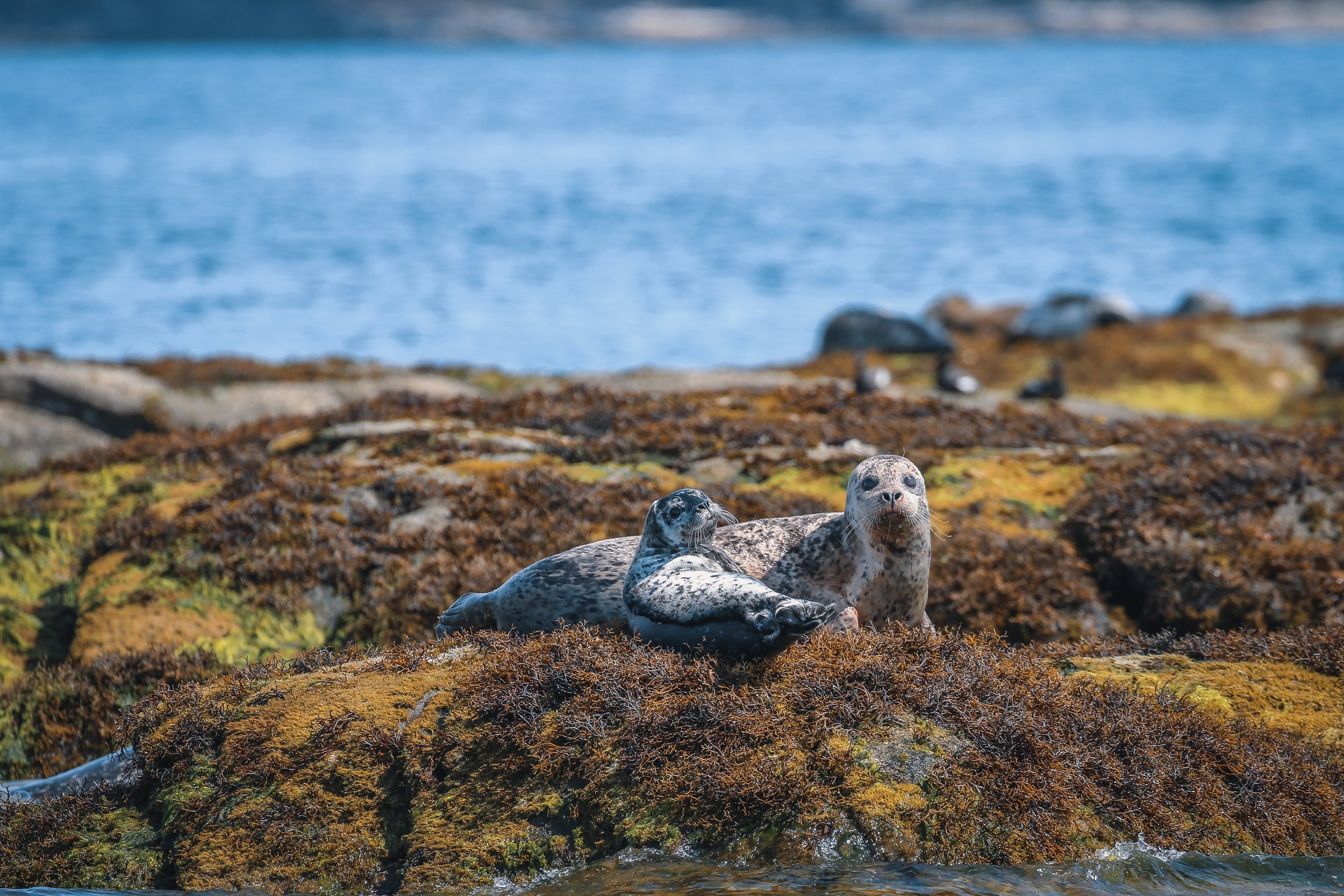
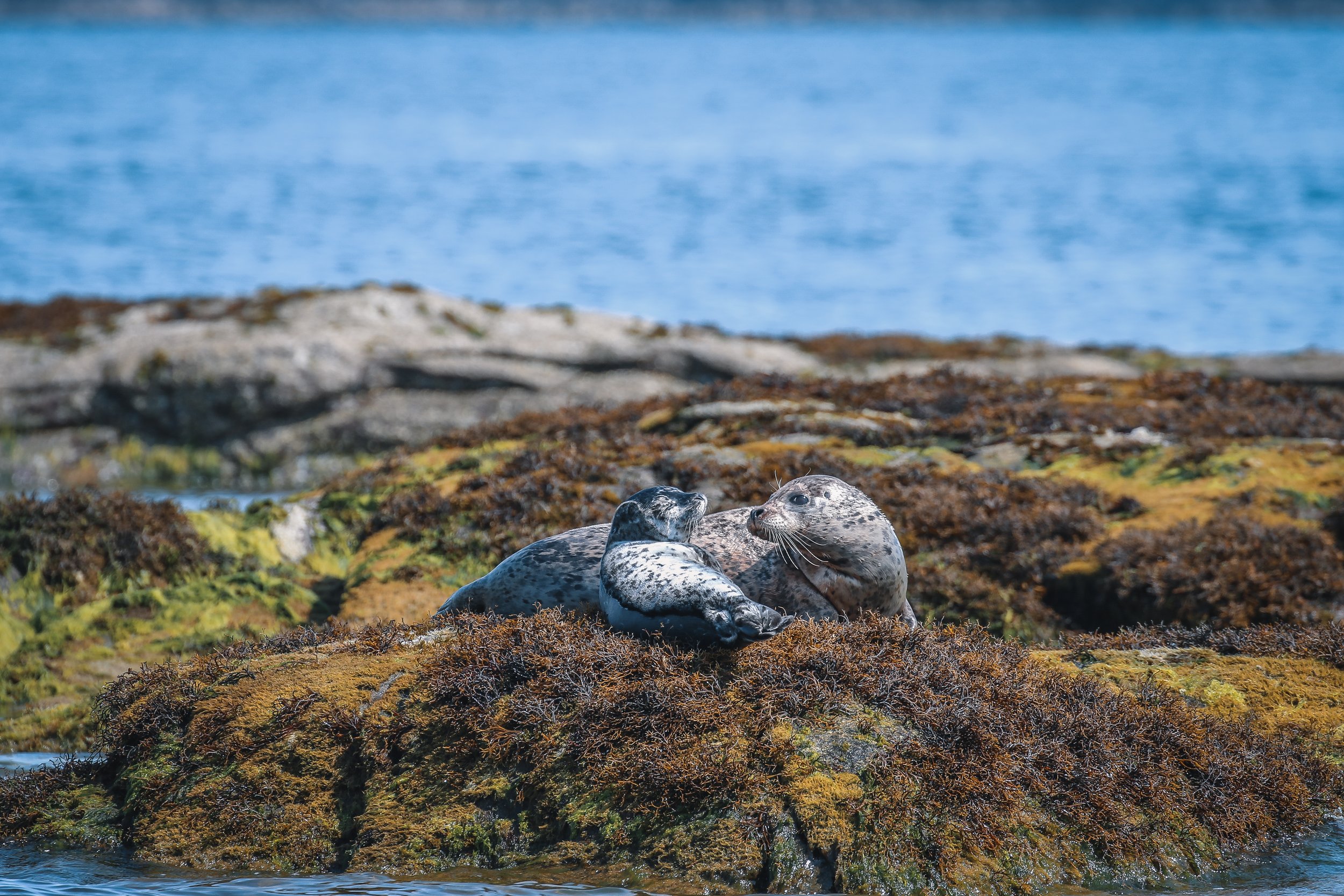
Harbour Seal - Phoca vitulina
The most abundant and commonly sighted marine mammal on our coast, the harbour seal is definitely a favourite! With their dog-like faces and curiosity, and the way they wiggle on their bellies along the rocks and logs, they are undeniably cute. Harbour seals are the only true (or “earless”) seals in British Columbia and adults average 70 kilograms and 1.5 meters in length. Identifiable by their stout bodies, large heads, and short limbs, they range in colour from greyish-white, to dark brown, to black. Often they have a very mottled pattern which makes them great at blending into the speckled intertidal zone.
Harbour seals live in British Columbia year-round. They favour nearshore locations (usually within 20 kilometres of the coastline) including tidal mudflats, sandbars, reefs, and log booms. Some seals have adapted to live far upriver and have even been found in some BC lakes! While harbour seals are quite solitary while at sea searching for prey, they do gather in large groups on land called haulouts. They haul out mostly at low tide and typically forage within 10-20 kilometres of their haul out.
Adult harbour seals eat roughly 2 kilograms of food per day and are generalist predators. They eat what is easiest to catch at the time; usually small to medium-sized fish and invertebrates like squid, octopus, and shrimp. For most of the year herring and hake make up the bulk of their diet, but in the summer and late fall, most of their diet is pre-spawning adult salmon found migrating toward rivers and estuaries.
Harbour seals are incredibly agile underwater predators! Their streamlined bodies give them a real advantage as they pursue their prey. They have been recorded diving deeper than 500 meters, but usually hunt within the first 100 meters, and because of their thick blubber, they can stay in the cold Pacific waters for the majority of the day. However, they are not the most agile animals on land. Because of their blubber and short limbs, they cannot push up and “walk” around like their sea lion cousins, and instead, they undulate slowly on land.
Harbour seals have large black eyes that are coated with oily tears, which allow them to open their eyes and see in deep, dark waters. In rivers and estuaries, where the water may be murky and impair vision, harbour seals rely on their long whiskers to search for prey. Their whiskers have sensitive nerve endings that pick up vibrations in the water column, so even if a seal cannot see a fish, they can “feel” the fish and hone in on it by using their whiskers. Adding to this, their hearing is 14 times better underwater than in the air and they can hold their breath for up to 30 minutes.
As most of their time is spent in the water, harbour seals must be acutely aware of predators. Orcas are intelligent, stealthy hunters and are by far the greatest predators of harbour seals. It is not uncommon to witness a family of orcas prey upon a harbour seal in the Salish Sea. Other known predators to harbour seals are sharks, including great whites and sleepers, steller sea lions and even coastal wolves!
Before European settlement, the Coast Salish people hunted harbour seals frequently in the Salish Sea. However, their hunting was modest, and it wasn’t until commercial hunting that the seals’ numbers started to dwindle. Between 1879-1914 and 1962-1968 harbour seals were hunted for their pelts and culled for being nuisances to fishermen.
Before their protection in 1970, their population was estimated to be as low as only 10,000 seals throughout BC. Since then their population increased immensely and reached a plateau in the 1990s. It is now estimated that there are over 105,000 seals along the BC coast spread over 1400 different haulout sites. The highest concentration of animals is in the Strait of Georgia where an estimated population of 40,000 seals thrive. Now, with their population healthy and at carrying capacity, they are a staple in the Transient (Bigg’s) Killer Whales’ diet and an incredibly important piece of the food web. It would be unusual to spend time along BC’s coast or on a whale watch tour and not see one of these guys!

